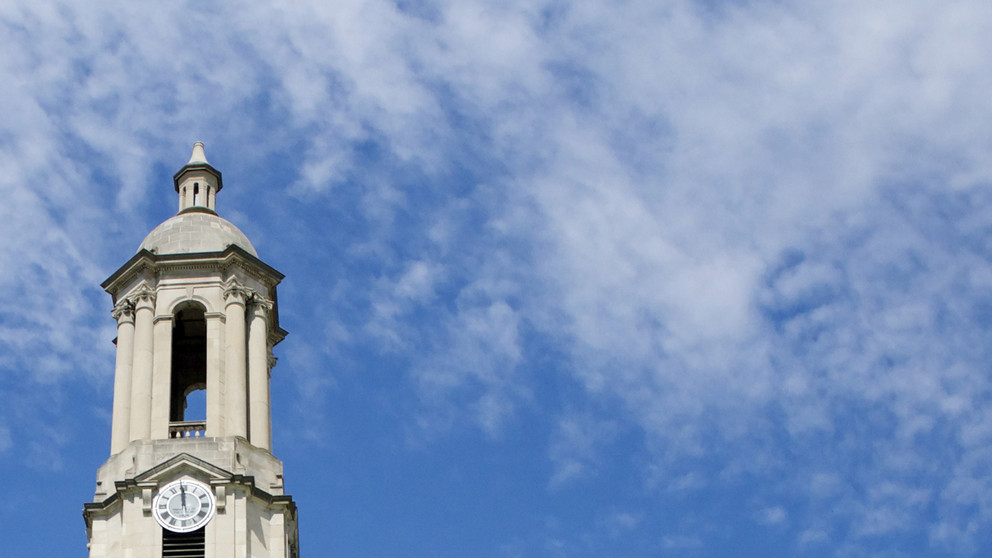Whether it’s student enrollment, alumni association membership, philanthropic giving, research investments or other key indicators of a university’s health, Penn State continues to shine as an institution of higher education.
What follows is a look at how the University is faring on a number of fronts — from the increasingly diverse student population to the record-setting number of alumni donors.
Student population
The number of students interested in coming to Penn State continues to grow, as shown in the marked increase in applications to the University. Likewise, the population is on a steady uptick, attracting a strong and diverse student body.
Since 2009, enrollment at the University has displayed solid growth, bumping up 4 percent overall, 9 percent among graduate students and 4 percent among undergraduates. Other student numbers during that same period have shown double-digit increases, including a 19 percent increase in degrees awarded and a 16 percent rise in applications for admissions.
At the same time, applications to Penn State continue to climb. In the last year, the University received 83,702 undergraduate applications, a nearly 14 percent increase. So far, this academic year is in keeping with that upward trend.
“The robust applicant pool this past year featuring prospective students with very strong academic credentials is clearly carrying into the current admissions cycle for which baccalaureate applications so far exceed 49,000, an increase of 8 percent over this time last year,” said Rob Pangborn, vice president and dean for Undergraduate Education.
The student body shows greater diversity as well. Minority students make up 23 percent of fall enrollment at the campuses and 17 percent at University Park compared to 13 percent a decade ago.
Building on that increase in diversity is one of the six imperatives President Eric Barron has identified as a key focus area for the University. Likewise, making sure Penn State remains accessible to all qualified students is a priority.
Philanthropic giving
In an era when universities are increasingly reliant on private giving, Penn State has since 2009, seen an 88 percent increase in its endowment, a 49 percent increase in annual fundraising and a 17 percent increase in the number of donors. In 2013-14, the University received support from 190,502 donors.
Much of that donor support is focused on student scholarships that help ensure the University remains accessible.
Rod Kirsch, senior vice president for Development and Alumni Relations, noted that Penn State’s alumni and friends made more than 2 million gifts to the University during “For the Future: The Campaign for Penn State Students,” which was recently completed.
“Each one of those gifts should be a source of pride to our community,” Kirsch said. “That support — more than $2.188 billion in total, making us one of only a dozen public institutions to hit a $2 billion goal — will fuel the ambition of our students, faculty and staff for years to come.
The campaign’s impact has been especially profound for undergraduates who might not be able to earn a Penn State degree without the $530 million in new scholarship support raised.”
He said the campaign reflects the commitment of Penn State graduates to keeping the University’s opportunities within reach and creating a better Penn State for future generations.
“With more than 176,000 alumni donors — the largest number in any higher education campaign to date — Penn Staters have shown the world that there’s no limit to what we can achieve together.”
— Rod Kirsch, senior vice president for Development and Alumni Relations
“With more than 176,000 alumni donors — the largest number in any higher education campaign to date — Penn Staters have shown the world that there’s no limit to what we can achieve together,” Kirsch said.
That ‘no-holds-barred’ attitude is demonstrated every year at THON — the world’s largest student-run philanthropy that raises money to support the children being treated for cancer and their families at Penn State Hershey’s Children Hospital. In addition to supporting children and their families through the Four Diamonds Fund, money raised by THON goes to research to improve treatment and find potential cures for pediatric cancer.
Formally known as the Penn State Interfraternity Council/ Panhellenic Dance Marathon, THON has seen tremendous growth. The $13.3 million donated this year continues to raise the bar — it is a 77 percent increase over the high-water mark of $7.5 million raised in 2009.
Research
Penn State’s research expenditures have increased 6 percent since 2009 from $765 million to $813 million in 2013-14.
Despite a climate where budget cuts continue to reduce federal funding for research and development in the U.S., Penn State has seen a 10 percent increase in federal research dollars since 2009, climbing from $446 million to $492.4 million. In addition to federal support, industry and other private sources accounted for $100.9 million of Penn State’s research expenditures in 2014.
“Penn State continues to be a leader in groundbreaking research, which can be seen in the federal and private support for the cutting-edge work that our researchers pursue,” said Vice President for Research Neil Sharkey.
“Our research expenditures exceeded $800 million for the fourth year in a row, and our balanced portfolio has helped us do quite well despite a federal downturn in funding,” he said. “We have some of the best faculty in the world, and that can be seen in the broad range of initiatives, including interdisciplinary work that brings researchers from across the University together and shows a remarkably high success rate when it comes to securing funding.”
Penn State’s growth in key areas continues to illustrate the health of the University and the dedication of its students, alumni and employees.



